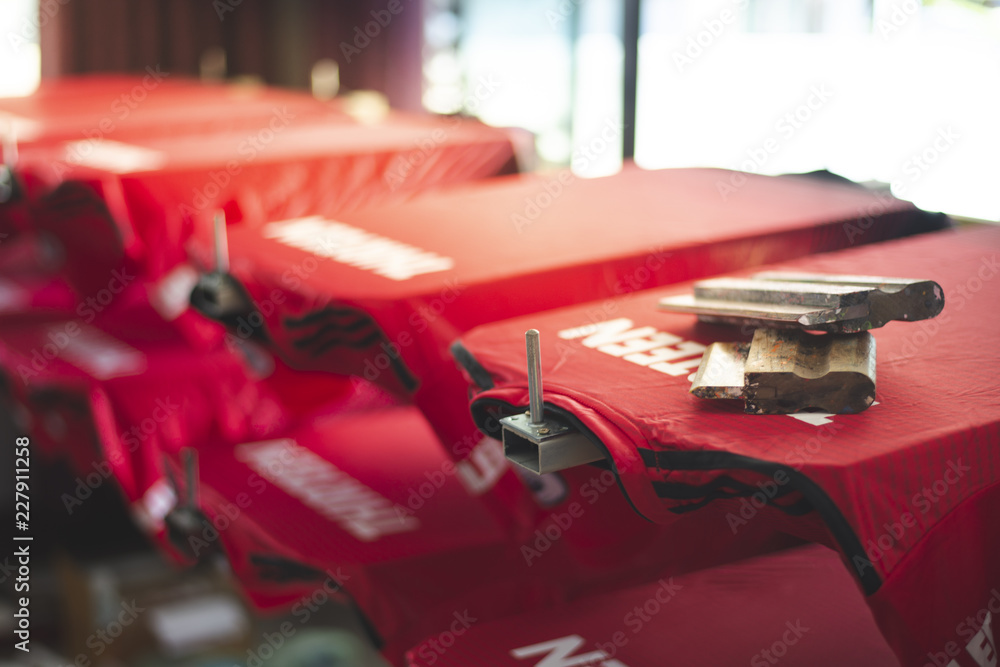Vinyl vs. Screenprinting: Which is the Better Choice for Your T-Shirt Design?

You’re probably wearing a custom-designed t-shirt as you read this article. Whether that shirt has a famous quote, the logo of a brand you’re loyal to, or an abstract visual design, its production took centuries and spanned continents. The history of printing on fabric dates back to 960 AD, when the Song Dynasty in China came up with screenprinting. Most of Asia continued crafting and using screen printing in the arts, and then Europe adopted and developed the method in the 19th century. Samuel Simon was the first man to patent the screenprinting method in 1907.
Several Miami-based companies popularized t-shirts decorated with resort names and different characters in the 1950s. Big companies like Coca-Cola and Disney used a similar tactic in the 1970s to advertise their own brands in t-shirts. Small and medium businesses caught on and saw how custom t-shirt designs helped promote their products or services to a larger audience.
You only want the best quality to represent your brand as a business owner. When deciding on what method is best to use for t-shirt printing, business owners often must decide whether to go with vinyl printing vs. screenprinting. Both offer incredible durability and high-level details that will showcase the reliability and professionalism of your business. If you’re unsure where to begin, read on to find out which t-shirt printing technique best suits your needs, budget, and final design.
What Is Screen-Printing?

Screen printing or silkscreen printing is the go-to method for t-shirt designs that need to come out in the best quality possible. As the name indicates, this technique uses a cut screen to set the design template. Only one ink color is applied per screen, and that ink spreads across the screen before passing onto the garment underneath.
Because this method requires a screen for every color, screen printing takes time to set up compared to vinyl printing. However, once the screens are in place, applying the different colors to complete the design is faster than vinyl printing. A screen-printing design can be used to print on at least 25 pieces. Because of its fast application, screenprinting is usually the preferred method for mass-producing t-shirts.
What Is Vinyl Heat Transfer?
Vinyl printing employs vinyl heat transfer to apply a design to the garment. A machine cuts out the different design elements before heat pressing them on the t-shirt. The pressing action is what transfers the design’s color onto the shirt. Compared to screen printing, vinyl heat transfer is faster to set up but slower in its production. It’s more efficient to choose vinyl printing if you’re only producing 16 t-shirts. Anything above 16 t-shirts will take too much time and consume too many resources.
Vinyl T-Shirt Printing or Screenprinting: Which Is Better?
Apart from the order quantity and production time, other factors should come into play when making a choice between vinyl or screenprinting:
Color vibrancy and detail
Screen printing is recommended for high-resolution, detailed designs like a photograph or a complex, multi-colored visual. Since several screens can be used for every color, it's possible to produce highly detailed or complex t-shirt designs through screenprinting. You can also mix various shades to come up with other hues that complete the image or final design.
On the other hand, vinyl heat transfer or printing is seen on simple graphics. You’ll typically see a vinyl t-shirt design on typography or text-based t-shirt designs or a visual composed of basic shapes. The number of colors is also limited, and the production method cannot blend different hues like screen printing.
Durability
Is vinyl printing durable? Vinyl printed t-shirts are designed to last more than five years, while screen printed t-shirts last within the lifespan of their regular use. Both t-shirt printing styles last longer with the proper washing and drying methods.
Proper vinyl and screen-printed t-shirt car
Vinyl printed t-shirts should never be dry cleaned and should only be machine washed under a warm setting. Only use a mild detergent if you’re washing a vinyl printed t-shirt. Avoid using chlorine bleach to remove stains and retain the flawlessness of the print. Wash the vinyl-printed t-shirt 24 hours after its printing.
To retain the quality of a screen-printed graphic:
- Wash the garment inside out and only use cold water.
- Avoid using fabric softeners or bleach.
- Stick to your regular detergent, as anything stronger may damage the print.
Choosing between vinyl or screen-printing for your t-shirt depends on many factors. The first consideration is the t-shirt design and its overall appearance. Your t-shirt printing method will have to match the number of colors and details involved. If you prefer to choose based on the t-shirt quantity, you’ll have to reconsider the design if it’s more suitable for vinyl printing. Regardless of your choice, you can rest assured that both screen and vinyl printing can produce high-quality designs, and either method can be used to match your budget.
Find the perfect shirt for your business at UPrinting to begin customizing a tried and tested promotional tool.
